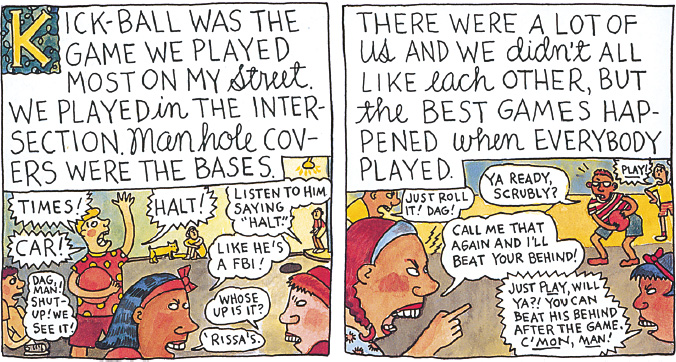22bUse varieties of English to evoke a place or community.
“Ever’body says words different,” said Ivy. “Arkansas folks says ’em different from Oklahomy folks says ’em different. And we seen a lady from Massachusetts, an’ she said ’em differentest of all. Couldn’ hardly make out what she was sayin’.”
–John Steinbeck, The Grapes of Wrath
Using the language of a local community is an effective way to evoke a character or place. Author and radio host Garrison Keillor, for example, peppers his tales of his native Minnesota with the homespun English spoken there: “I once was a tall dark heartbreaker who, when I slouched into a room, women jumped up and asked if they could get me something, and now they only smile and say, ‘My mother is a big fan of yours. You sure are a day-brightener for her. You sure make her chuckle.’”
Weaving together regionalisms and standard English can also be effective in creating a sense of place. Here, an anthropologist writing about one Carolina community takes care to let the residents speak their minds—and in their own words:
For Roadville, schooling is something most folks have not gotten enough of, but everybody believes will do something toward helping an individual “get on.” In the words of one oldtime resident, “Folks that ain’t got no schooling don’t get to be nobody nowadays.”
–Shirley Brice Heath, Ways with Words
Varieties of language can also help writers evoke other kinds of communities. In this panel from One! Hundred! Demons!, Lynda Barry uses playground language to present a vivid image of remembered childhood games. See how kids’ use of slang (“Dag”) and colloquialisms (“Whose up is it?”) helps readers join in the experience.

Global Varieties of English
FOR MULTILINGUAL WRITERS
Global Varieties of English
Like other world languages, English is used in many countries, so it has many global varieties. For example, British English differs somewhat from U.S. English in certain vocabulary (bonnet for hood of a car), syntax (to hospital rather than to the hospital), spelling (centre rather than center), and pronunciation. If you have learned a non-American variety of English, you will want to recognize, and to appreciate, the ways in which it differs from the variety widely used in U.S. academic settings.